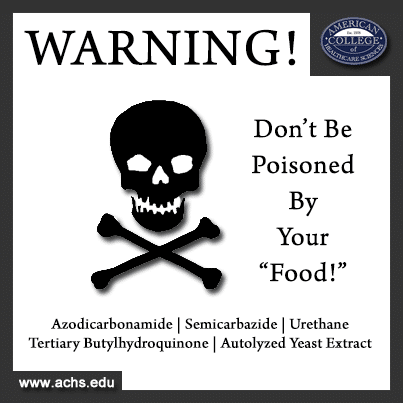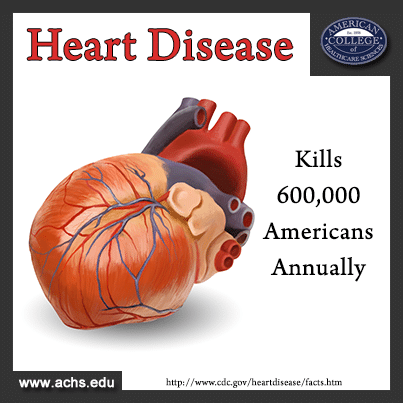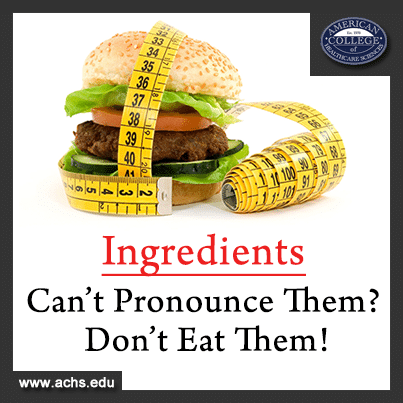

It’s fitting that March is National Nutrition Month, considering Subway recently made headlines by announcing it would no longer use the yoga mat ingredient, azodicarbonamide (ADA), in its bread.[i]“Oh yay!” I thought. “I love my yoga mat, but in my sandwich? Gross!” My rule is never to buy something with ingredients my daughter can’t pronounce, and ADA definitely falls under that heading! But when I started reading more, I got really pissed off. (That means mad in New Zealand.)
Azodicarbonamide (pronounced azo-di-car-BON-amide) is an industrial rubber foaming agent, also used in yoga mats and rubber shoe soles.
An industrial rubber additive in our food? YUCK! After all the marketing spin Subway sells us on eating fresh, I definitely see a class action lawsuit in their future. It’s DISGUSTING!
This little beauty is banned in the EU, Australia, and many other countries, so Subway has made a conscious decision to add this toxic nasty to their U.S. products only. Stay fresh? As fresh as a yoga mat? People used to chew on shoe leather when they were starving to death in the middle ages. Is this how far we’ve come? We’re eating additives found in shoes that will put us in an early grave?
Why did all the other countries ban it? Studies have shown that when azodicarbonamide is cooked, two other chemicals are formed: semicarbazide and urethane.[ii] Yes, urethane, the known carcinogen. Would you like a cookie with that?
How is this not illegal here in the U.S.? The FDA has deemed it safe at a level of 2.05 grams per 100 pounds of flour (0.0045 percent; 45 parts per million).[iii] What a shock! The FDA approved something that’s bad for us! There’s toxic lead in our lip-gloss, yoga mats in our bread…is it just me, or is the FDA spending way too much time sending letters to small herbal extract producers (who dared to say that a tincture might help support kidney health), instead of getting toxic chemicals out of our food supply?
The Subway scandal was uncovered by an intrepid food blogger. Yup, Vani Hari—who runs the site FoodBabe.com—did the job you assume the FDA would do. Nope, your tax dollars were not at work protecting you here, it was a blogger. Bloggers: here to protect you from the industrial food complex. We’re going to have to start handing out superhero masks at blogging conventions.
Subway has agreed to take out the nasty ingredient within the next few weeks, but this whole thing put me up on my soapbox. With this scandal in mind, I thought it necessary to put together a little line up of the five worst offenders in fast food. And wouldn’t ya know, it was hard to narrow them down. Sad, but true!
5. McDonald’s
This is probably not news to many of you. Most health conscious wellness geeks know McDonald’s isn’t healthy. And yet, McDonald’s continues to do a remarkable amount of business. And—best yet—they were a major sponsor of the Winter Olympics. Woohoo! Because that’s what an elite athlete eats… NOT! Did you know that they provide spit buckets for the athletes and celebrities who don’t want to swallow during the ads?
However, even more shocking: McDonald’s defends their use of ADA!
Azodicarbonamide [ADA] is commonly used throughout the baked goods industry, and this includes some of the bread goods on our menu. While this ingredient is recognized as safe and approved by the FDA, we listen to our customers and evolve to continue to serve the great tasting, quality food they expect from McDonald’s. This ingredient, like all the ingredients we use, is available to consumers on our website.[iv]
Oh, and if that doesn’t kill you, you can get a side of high blood pressure with that azodicarbonamide…
 According to the Center for Disease Control (CDC), the number one cause of death in the U.S. is heart disease. 1 in 4 deaths result from heart disease or approximately 600,000 people annually.[v] And according to the National Heart, Lung, and Blood Institute, some of the top causes of heart disease are high blood pressure, high cholesterol, unhealthy diet, and lack of exercise.[vi]
According to the Center for Disease Control (CDC), the number one cause of death in the U.S. is heart disease. 1 in 4 deaths result from heart disease or approximately 600,000 people annually.[v] And according to the National Heart, Lung, and Blood Institute, some of the top causes of heart disease are high blood pressure, high cholesterol, unhealthy diet, and lack of exercise.[vi]
What is the main cause of high blood pressure? Processed foods and high salt consumption. Sea salt, used in moderation as a condiment, has lots of lovely minerals that your body needs. But the industrial salt, sodium chloride, used in industrial foods at incredibly high quantities, is extremely bad for your body, especially in high doses. In fact, a study published by the British Medical Journal in 2009 concluded, “High salt intake is associated with significantly increased risk of stroke and total cardiovascular disease [heart disease].”[vii]
McDonald’s signature, and most popular burger, the Big Mac, contains 970mg of sodium.[viii] According to the CDC, the body only needs between 150mg to 500mg per day, but the tolerable upper intake level should be no more than 2,300mg per day.[ix]
The burger itself contains 970-mg but most people don’t just buy the burger. They sell you a meal, which includes medium fries and medium soda for a few pennies more. This adds an additional 275mg of sodium.[x] This brings the total to 1,245mg from ONE McDonald’s meal. This is over half the recommended tolerable upper intake level and 83% of the recommended 1,500mg!
Although, the worst offender on the McDonald’s menu is the “Big Breakfast with Hotcakes and Egg Whites (Large Biscuit)” at 2,290mg of sodium.[xi] I’ll take a kale smoothie over that nasty breakfast any morning!
4. Taco Bell
The company that recently advertised “Fourth Meal,” because America wasn’t getting fat enough with just three meals a day, started with the slogan, “The Fresh Food Place.” They’ve since degraded to “Live Mas,” an ironic slogan meaning “live more.” They make a great case for the number one spot on our list of dangerous restaurants for your health, but they receive the number 4 spot because there are just too many bad choices.
Taco Bell has made major headlines twice since 2000. In 2000, they were in the news over the recall of their taco shells because they contained unapproved GMO corn,[xii] and again in 2011 when they were sued with the claim that their ground beef didn’t meet federal standards![xiii] (Federal standards—yup—the same standards that brought us azodicarbonamide, so you know we’re talking bare minimum standards here folks).
Attorney Dee Miles said the meat mixture contained just 35 percent beef, with the remaining 65 percent containing water, wheat oats, soy lecithin, maltodrextrin, anti-dusting agent and modified corn starch.[xiv]
Yummy!
If that isn’t bad enough, only FOUR of their 23 burritos contain under 1,000mg of sodium and 6 contain over 2,000mg[xv]!
While these major headlines are disgustingly awful, are you really shocked that the fast food joint (which partnered with Doritos on a taco shell) is bad for you? I didn’t think so.
3. Pizza Hut
When most people think of “fast food,” I’m not sure pizza restaurants come to mind. But you should think twice before placing that delivery order! Pizza Hut has earned the number 3 spot on our dangerous restaurants list, and here’s why.
One slice of the “Meat Lovers” or “Peperoni Lovers” pizza from their “14-inch Large Thin ‘N Crispy Pizza” contains a whopping 1,180mg of sodium[xvi]! Most people I know don’t limit themselves to ONE slice. If you have two slices, you’ve consumed 102% of your recommended tolerable upper intake level of sodium in one meal.
 Add cheesy bread with that? You’re adding some ingredients you probably weren’t expecting:[xvii]
Add cheesy bread with that? You’re adding some ingredients you probably weren’t expecting:[xvii]
- Azodicarbonamide
- Tertiary Butylhydroquinone or TBHQ: A preservative derived from petroleum also found in varnish, lacquers, and resins[xviii]
- Autolyzed yeast extract: a source of hidden gluten, naturally contains MSG, and is often used a cheap MSG substitute[xix]
Cars require petroleum, not humans! It is disgusting that this is legal.
2. Subway
We already know Subway added ADA to their bread. They’ve committed to discontinuing it’s use, which is commendable. So what else could be hurting you from the fast food chain widely considered a “healthier choice” and advertises “heart healthy” options?
18 of their 6-inch sandwiches with “9-grain wheat bread, lettuce, tomatoes, onions, green peppers and cucumbers” contain over 1,000mg of sodium.[xx] That doesn’t include any of their sauce options. Add the Southwest sauce and that’s another 220mg. Choose the Red Wine Vinaigrette and that’s an additional 340mg.[xxi] Add cheese and that can be up to an additional 200mg.[xxii] One 6-inch sandwich can quickly add up to 1,550mg or more. Craving that foot-long? That will cost you 3,100mg of sodium![xxiii]
Subway’s not exactly that healthy “eat fresh” alternative they advertise.
1. Baja Fresh
Baja Fresh—say it isn’t so! Sadly, Baja Fresh receives our number one spot on our list of the 5 most dangerous restaurants for your health.
Baja Fresh advertises: “Flavor and nutrition over fillers and fads. At Baja Fresh you’ll find eating well is a way of life and a state of mind. We believe in real food made with passion, for real people. Food that’s always prepared by hand from real recipes and real farm fresh ingredients, not pre-packaged.”[xxiv] They continue, “you won’t find any freezers, can openers, or microwaves in a Baja Fresh location.”[xxv]
While I commend Baja Fresh for their model of fresh ingredients and fresh prepared food, what I discovered makes me question their definition of “eating well.”
Only 8 of their 23 burritos contain less than 2,000mg of sodium. Out of that 8, only 2 are below 1,800.[xxvi] Even their grilled veggie burrito has 1,880mg.[xxvii]
Oh wait, I’m not done. They tout 17 fajita options, but the lowest contains 1,970mg and the highest contains 3,450mg![xxviii]
Why does this put them at the number one spot? Because you probably eat there thinking it’s the healthier choice. This kind of false advertising makes it dangerous. There are ways to make food safety without adding half the contents of the Dead Sea!
Does this all annoy the #$%! out of you too? Let’s focus all that annoyance on solving the problem. The obvious answer is cooking more at home, but we all understand that can be difficult in our “on the go” lifestyle. No worries, we’re here to help. Here are some tips on how to maintain your holistic nutrition on the go!
- Ask your favorite fast food joint for nutrition facts, and pepper the manager with questions. If the manager can’t answer your questions, ask the company on Facebook. The more we know, the more we can pressure them to get the junk out of our food. The sodium and chemical nasties are often found in the dressings and toppings. Skip or cut the dressing in half to lower your sodium intake!
- Support your local, farm to table, fresh food sourcing restaurants. Ask if they offer takeout. Many do even if it’s not advertised
- Batch cook on the weekends, and make your own fast food to heat up when you get home. You can also use a slow cooker and come home to dinner on the table! Stop adding salt when you cook, and add it at the table in small quantities. Use lots of herbs to add flavor instead of salt. Trust me, your taste buds will adapt
- Use online grocery services that help you get decent quality, GMO free, organic groceries. My favorite is Green Polka Dot Box (http://www.greenpolkadotbox.com/invite/id/14595/ affiliate link)
- Sign up for a CSA and get a weekly box of vegetables and supplies to make food. I am so annoyed when the vegetables go bad that I force myself to cook at home— even on nights when I’m worn out and would rather eat out. And worse case scenario, make a huge pot of vegetable soup in your slow cooker and juice everything else
- Need inspiration on what to cook? Receive 12 Free Recipes: Food Fast – Not Fast Food
- Watch Dr. Mary Fry’s Master Lecture: Cooking For Health
As advocates for holistic nutrition and health and wellness, we need to be spreading the word about these issues. There is a serious problem with the U.S. food industry and our country’s relationship with food. Let’s be proactive about making positive changes by speaking out and sharing valuable knowledge about nutrition with others, and maybe we’ll stop seeing copious amounts of salt, rubber soles, and yoga mats on our dinner tables.
How do you feel about the Subway yoga mat scandal? Tell me in the comments!
This article is for informational purposes only. It is not intended to treat, diagnose, cure, or prevent disease. This article has not been reviewed by the FDA. Always consult with your primary care physician or naturopathic doctor before making any significant changes to your health and wellness routine.
[i] Landau, E. (2014, 17 February). Subway to remove ‘dough conditioner’ chemical from bread. CNN. Retrieved from http://www.cnn.com/2014/02/06/health/subway-bread-chemical/
[ii] Zuraw, Lydia. (2014, February 12). Food advocates call on FDA to ban potentially carcinogenic bread additive. Food Safety News. Retrieved from http://www.foodsafetynews.com/2014/02/food-advocates-call-on-fda-to-ban-potentially-carcinogenic-bread-additive/#.UwabQ424LxM
[iii] Ibid.
[iv] Landau, E. (2014, 17 February). Subway to remove ‘dough conditioner’ chemical from bread. CNN. Retrieved from http://www.cnn.com/2014/02/06/health/subway-bread-chemical/
[v] Center for Disease Control and Prevention (CDC). (2013, August 28). Heart disease facts. Retrieved from http://www.cdc.gov/heartdisease/facts.htm
[vi] National Heart, Lung, and Blood Institute. (2011, September 26). Who is at risk for heart disease? Retrieved from http://www.nhlbi.nih.gov/health/health-topics/topics/hdw/atrisk.html
[vii] Strazzullo, P., D’Elia, L., Kandala N., Cappuccio F.P. (2009). Salt intake, stroke, and cardiovascular disease: meta-analysis of prospective studies. BMJ. 2009;339:b4567. Retrieved from http://www.bmj.com/content/339/bmj.b4567
[viii] McDonald’s. (2014). McDonald’s USDA nutrition facts for popular menu items. Retrieved from http://nutrition.mcdonalds.com/getnutrition/nutritionfacts.pdf
[ix] Center for Disease Control and Prevention (CDC). (2011, February 23). American’s consume too much sodium (salt). Retrieved from http://www.cdc.gov/features/dssodium/
[x] McDonald’s. (2014). McDonald’s USDA nutrition facts for popular menu items. Retrieved from http://nutrition.mcdonalds.com/getnutrition/nutritionfacts.pdf
[xi] Ibid.
[xii] Pollack, A. (2000, September 23). Kraft recalls taco shells with bioengineered corn. The New York Times. Retrieved from http://www.nytimes.com/2000/09/23/business/kraft-recalls-taco-shells-with-bioengineered-corn.html
[xiii] Fox BYO. (2011, February 3). Taco Bell sued over meat that’s just 35 percent beef. Fox News. Retrieved from http://www.foxnews.com/health/2011/01/25/wheres-beef-taco-bell-sued-ingredients/
[xiv] Ibid.
[xv] Taco Bell. (2014). Full nutrition information: all items. Retrieved from http://www.tacobell.com/nutrition/information
[xvi] Pizza Hut. (2014). Nutritional Information. Retrieved from http://www.pizzahut.com/nutritionpizza.html
[xvii] Food Babe. (2014, February 11) Food Babe investigates: How food companies exploit Americans with ingredients banned in other countries. 100 Days of Real Food. Retrieved from http://www.100daysofrealfood.com/2013/02/11/food-companies-exploit-americans-with-ingredients-banned-in-other-countries/
[xviii] Botes, S. (2011, February 14). TBQ – Why this preservative should be avoided. Natural News. Retrieved from http://www.naturalnews.com/031318_TBHQ_food_preservatives.html
[xix] Wiesenfelder, H. (2013, October 21). What is autolyzed yeast extract? Live Strong. Retrieved from http://www.livestrong.com/article/71755-autolyzed-yeast-extract/
[xx] Subway. (2014). Nutrition Information. Retrieved from http://www.subway.com/nutrition/nutritionlist.aspx
[xxi] Ibid.
[xxii] Ibid.
[xxiii] Ibid.
[xxiv] Baja Fresh. (2014). Nutritional table. Retrieved from http://www.bajafresh.com/
[xxv] Ibid.
[xxvi] Ibid
[xxvii] Ibid.
[xxviii] Ibid.





